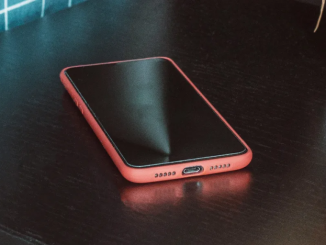Smartphones come with many useful features that make life easier, but some of these features are hidden or overlooked.
From quick shortcuts to helpful settings, these tips can make using your smartphone faster, easier, and more fun.
Below are a few simple tricks to unlock your smartphone’s hidden abilities!
Smartphones are a big part of daily life, helping with everything from staying in touch to tracking fitness, scheduling, and entertainment. But many of us don’t know everything they can do.
Here are some hidden smartphone features and tips to help you make the most of your device.

**Silence in Seconds**
Everyone’s been caught in a place where phones should be silent, only for it to start ringing. You can quickly silence calls or notifications by pressing the volume down button. Your phone will go quiet without ending the call or dismissing the alert, saving you from any embarrassment!
**Quick Camera Access**
Special moments happen without warning, and there’s no time to search for the camera app. You don’t need to unlock your phone to take a picture. On iPhones, swipe left from the lock screen to open the camera. Android users can double-press the power button to open the camera instantly. This way, you’ll never miss an important shot.
**Widgets**
Widgets have grown from simple displays to tools that can make smartphone use even easier. Adding widgets to your home screen lets you check important info, access apps, and complete tasks without scrolling through menus. Popular widgets include calendar, email, weather, notes, and health. For smart home users, widgets can control devices directly from the screen.
**Reduce Eye Strain**
Spending long periods looking at screens can cause eye strain. To help with this, activate dark mode. It looks sleek and saves battery on OLED screens, plus it’s easier on the eyes at night. Many popular apps also have dark mode. Also, try the 20-20-20 rule: every 20 minutes, look at something 20 feet away for at least 20 seconds to give your eyes a break.
**Reduce Battery Drain**
Nothing is more frustrating than a phone that loses power without use. Modern smartphones come with battery-saving settings that help stretch battery life. Here are some ways to preserve battery power:
– **Activate low power mode (iPhone) or battery saver (Android)**: This mode turns off non-essential functions to conserve energy.
– **Auto-brightness**: The screen uses a lot of battery. Lowering the brightness or using auto-brightness can save power.
– **Limit background refresh and sync**: Many apps refresh in the background, draining the battery faster. Limiting this can save energy.
– **Close or uninstall battery-draining apps**: Social media, gaming, and streaming apps often use more power. Close or uninstall apps you don’t often use to save battery.
**Keeping Your Phone Running Well**
To keep your phone running smoothly, it’s important to maintain it. Over time, your phone can slow down due to heavy use or software updates. Here are some tips to keep your phone fast and efficient:
– **Clear cache regularly**: Apps save temporary data, but too much cache can slow your phone.
– **Limit background apps**: Apps running in the background use memory and battery. Limiting background activity helps improve performance.
– **Free up storage space**: Low storage can slow your phone and cause apps to crash. Clearing storage boosts speed and stability.
– **Update apps and software**: Updates include bug fixes and improvements to keep your phone functioning smoothly.
These smartphone tips are just a start. Exploring these tricks can make your device a more helpful part of your daily routine, from staying organized to simplifying tasks.
At 53, Kelly Ripa’s black gown on Oscars red carpet ignites reactlons from fans
It was a predictably eventful evening in LA this past Sunday at the 96th Academy Awards, hosted at the Dolby Theater.
Among the stand-out moments were John Cena’s naked walk across the stage to present the award for Best Costume Design and Al Pacino’s decision to skip over the nominations for Best Film altogether, instead going straight to announcing the winner.
There were also plenty of talking points to be gleaned from the red carpet, not least relating to the plethora of eye-catching outfits on show. As per reports, actress Kelly Ripa and husband Mark Consuelos were among those to steal the show, with the former causing a particular stir on social media.
Celebrities dominating headlines for their choice of garment for any particular awards ceremony is nothing new.
Yet in the age of social media, where live photos from the red carpet can be shared around the world at the click of a button, it’s become arguably more popular than ever to discuss and debate outfits in real time.
As such, it’s only natural to expect that an event of the magnitude of the Oscars, and those fortunate enough to be in attendance, is always going to be heavily scrutinized.




Leave a Reply